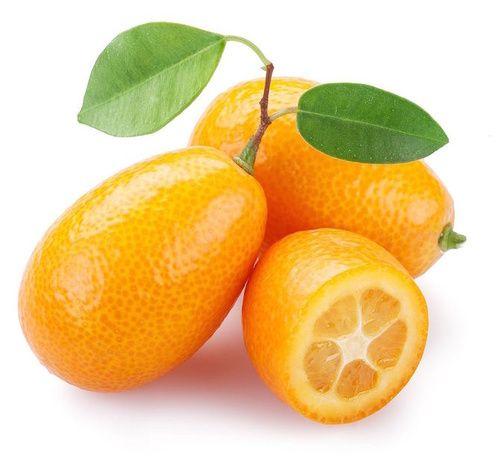Il Kumquat, or Chinese mandarin, is a citrus fruit rich in essential oils, useful for the immune system, respiratory tract and the nervous system. Let's find out better.
> Calories, nutritional values and properties of Kumquat
> Contraindications of Kumquat
> How to eat Kumquat

Description of the fruit
Not all citrus fruits belong to the genus Citrus, the kumquat, sometimes called Chinese mandarin or fortunella, belongs to the genus Fortunella and produces orange (sometimes straw yellow or greenish) and oblong fruits, similar in all respects to citrus fruits of the genus Citrus, of which it was part until 1915.
Ha shrubby habit and produces thorns and flowers similar to those of other citrus fruits. The peel of its fruits has a citrus smell and externally resembles that of sweet orange, but has the characteristic of being fused with the pulp, so as to cannot be peeled.
It's juicy, sweet but strongly aromatic due to the numerous essential oils contained. Like most citrus fruits, it comes from Southeast Asia, between southern China and the Indonesian islands.
Kumquat, ally of
It supports the immune system, helps the respiratory tract, digestion and skin, helps the nervous system.
Calories, nutritional values and properties of kumquat
Kumquat contains 71 kcal per 100 g.
In addition, 100 g of product contain:
- 0.9 g fat
- Cholesterol 0 mg
- Sodium 10 mg
- Potassium 186 mg
- Fiber 7 g
- Sugar 9 g
- 1.9 g protein
We have already mentioned the strong aromaticity of the fruit and its richness of essential oils; the main oil is absolutely limonene, followed by alpha-pinene, alpha-bergamotene, alpha-muurolene, alpha and beta-caryophyllene, and various carbonyl and terpenoid compounds (such as citronellol or nerol ) which give the fruit its unique taste.
Thanks to this unique richness in nature (some of these compounds are extremely rare in natural organic substances), kumquat has numerous properties: antimicrobial and antibacterial, anti-inflammatory, antitumor, excellent against pathogens that attack the skin, strongly antioxidant thanks to vitamin C and numerous bioactive phenols.
It is indeed extremely rich in vitamin C, but also contains pantothenic acid, riboflavin and folic acyphus. It is a good source of trace elements, especially iron, manganese and calcium.
The kumquat among the rare citrus fruits: discover the others

Contraindications of kumquat
Kumquat should not be eaten in case of pharmaceutical treatments since interacts with medicines, often inhibiting the power of the same.
Curiosity
- The fruits (almost identical in all) of different species are also called kumquat: the Fortunella japonica (rounder), the Fortunella margarita (more oval), the Fortunella obovata (sometimes of more colors), the Fortunella hindsi (with smaller fruits ) and other minor ones.
- There is a coincidence regarding the origin of the name "fortunella": it derives from the botanist Rober Fortune who first brought them to Europe but, coincidentally, the translation of the Cantonese name of the fruit is "golden good luck".
- Kumquat chutney is particularly popular in Asia.
How kumquat is eaten
Ripe kumquat has very little or no green on the skin and is soft. Regarding the sweetness-sourness relationship, it is believed that the rounded varieties are sweeter while the oblong ones turn more sour, due to the higher levels of limonene. The peel is thin and can be easily scratched, so it is always good to avoid fruits with cuts and stains.
The peel must be homogeneous and not have smooth and translucent parts, a sign of excessive ripening and fermentation. The fruit should be well washed because it is eaten with the whole peel and, paradoxically, it is in the peel that the sweetness is concentrated while the juices rich in terpenes reside in the segments.
In addition to fresh consumption the use of making it is reported jam, of candied them with all the peel, of produce liqueurs or to use them for ice creams and slushes.
READ MORE
The properties, benefits and contraindications of bael
In collaboration with Giacomo Colomba
| Experto.de


























